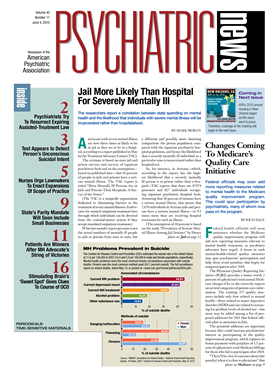Posttraumatic stress disorder (PTSD) has a clear environmental etiology, with high rates of exposure to traumatic stress but relatively lower incidence of diagnosed illness. An estimated 75 percent of the U.S. population has been exposed to trauma, but the lifetime incidence of PTSD is only 7 percent, said Andrew Holmes, Ph.D., section chief and principal investigator at the National Institute on Alcohol Abuse and Alcoholism. He spoke at the annual Amygdala Conference at the Uniformed Services University of the Health Sciences in Bethesda, Md., in April.
“At the same time, there is a clear genetic component, since twin studies indicate that about one-third of the risk for PTSD comes from our genetic makeup,” said Holmes. “Exploration of several candidate genes has proved somewhat disappointing, but that's not surprising given the huge complexity in genetic background and exposure in human populations.”
To gain further insights into mechanisms of PTSD, Holmes has been working on mouse models of resilience and susceptibility in analogs of the disorder, exploring the brain circuitry that connects genetics and behavior.
Within each of the hundreds of strains available to scientists, the mice are as genetically similar as identical twins. Holmes eventually chose two strains, based on their different abilities to extinguish fear.
Fear extinction, the progressive reduction in response to a conditioned stimulus with repeated exposure, serves as a useful translational tool in animals because fear extinction is impaired in humans with PTSD. Holmes settled on the B6 and the S1 strains. The B6 mice have a typical fear extinction pattern, with response dropping with increased exposure. The S1 mice, after similar initial conditioning, exhibit hardly any fear extinction.
That deficiency in S1 mice was associated with dysfunction in the prefrontal-amygdala circuitry involved with mediating fear extinction, he said. The S1 strain also displayed increased dendritic arborization, associated with impaired extinction in the phenotype.
Holmes and other researchers have challenged mice with various drugs to see if they affect fear extinction. One dose of yohimbine or three weeks of fluoxetine treatment, for instance, rescued extinction in S1, but D-cycloserine did not.
More recent work indicates that dietary zinc depletion, which inhibits the function of the NMDA receptors that mediate extinction, speeds up extinction in B6 mice and normalizes it in S1.
“We should be cautious about extrapolating zinc depletion to humans because it can cause hyperexcitability and seizures, but we can use it in animals to study mechanisms,” he said.
His next research step will use targeted gene manipulations to see if specific genes control fear extinction.
